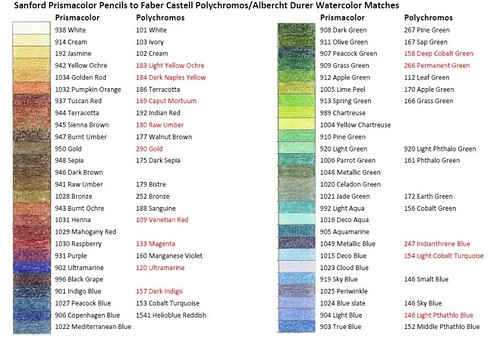Can you tell me the color conversions for Faber-Castell to Prismacolor Premier colored pencils.
Any help is appreciated.
Thank you!
This one took a while to find and I had to turn to my friend Cody Goodin for help. He suggests you go to the Making a Mark website and review the article on this page; they have links to various color pencil charts. He also sent me two charts he found on the WetCanvas website. I've attached them here for you (click on them for a larger pic).


Hope this helps.
Judi